The year is 1235 A.D. Three women accused of practicing witchcraft are herded like animals to the side of a bridge, where they are told, by a priest, to confess their crimes of consorting with the Devil. Are they real witches, or are they innocent victims of religion gone wild? Our better, more civilized senses tell us they are doomed damsels of the latter kind, forced to face a test that will kill them regardless of truth. Witches, demons, plague, war and more make Season of the Witch as Gothic as it gets; the result is an unlikely terror tale of hope, redemption, and the human condition.
Flash forward to the year 1332 A.D. Behmen von Bleibruck (Nicolas Cage) and Felson (Ron Perlman) are Crusaders–knights of the most unholy of holy wars ever fought, fooled into serving a version of God created by man, more like Satan in his mortal motives. Therein lies the crux of this seasonal story and the folly of the crucifix attributed to it; therein lies the pivotal need for redemption for the deadliest of sins numbering seven–wrath, greed, sloth, pride, lust, envy, and gluttony–as cardinal and capital they are. Yes, this god (according to man) pardons everyone from all sins, if they kill nonbelievers in his name. Bleibruck and Felson have grown weary of such a god; a moment of revelation is a breaking point that pushes faith beyond the limits.
“A benevolent God would not ask such things of men!” ~ Behmen von Bleibruck
Claire Foy plays the part of a young woman, Anna, innocent in her appearance, who may or may not be a witch. She is considered responsible for the Black Death of the time, and her confession is necessary to end the scourge–or so they think. A court date is set for the accused woman, as Bleibruck and Felson accept, under some duress, the task of transporting her to a monastery–the worst of places, as we know, for people of the time to be judged.
Is Anna really a witch? Of course, that can’t be revealed here; however, Claire Foy‘s performance as the accused is, indeed, something to be talked about! With every prophetic word she speaks, cryptic and foreboding in tone and delivery, along with a look that captivates, even from afar, Foy steals the show from her veteran costars like a premature pro herself. Foy is the essence of Anna, as needed, as a woman of mystery (or a witch) we can’t identify. Should we fear her, or should we pity her, hoping she escapes her journey to judgement, damned by dogma already. Foy looks convincingly evil when necessary, while equally innocent elsewhere–demure but deadly…maybe. Her character is crucial in creating suspense and uncertainty needed to hook us to the story, ready to be reeled in; with Foy at the helm, we find exactly that character, masterfully played with humanness that is good, and evil that is otherworldly, dangerous, and undefinable. As an actor competing with the likes of Cage, Perlman, and more, Foy stands out as a force not forgotten, making Anna one to be remembered.
Nicolas Cage (as Behmen) is the epitome of the loyal soldier and servant of God, skilled and deft as a Knight, proven in battle, with a reputation already legendary. Cage, is his usual character, minus the humor he does so well, when necessary. Whereas some bigger stars don’t take roles in smaller films as seriously, sometimes walking through rather than participating in them, Cage does it right. He plays his part straight and convincing, as well as I’ve seen him perform in the biggest blockbusters. Cage never once did anything but his usual best…again!
Ron Perlman (as Felson) is his usual “bad ass” self, kicking butt as a soldier, using his body as a weapon, as crudely but effectively as Behmen does with discipline. He is convincing, entertaining and humorous as usual, using his own personality effortlessly to create his character. While some actors fail at this occasionally, Perlman succeeds every time. He always improves a movie with his presence alone (especially those of the Medieval sort) and Season of the Witch is no exception. Yes, Perlman is an actor, like Cage, who will make you watch a movie simply because he is in it. Here, he does it again and delivers!
Also playing crucial roles in the movie are Stephen Campbell Moore, Stephen Graham, Robert Sheehan, and Christopher Lee. Moore plays Debelzaq, the monk who escorts Behman and Felson to with the witch. Moore, as called for, is the necessary stereotype of a devoted man of the Lord, far wiser in his honesty than most of those around him. Hagamar is the not-to-be-trusted swindler and guide for the dangerous journey; he is pardoned of his crimes and relieved of his punishments in the stockade in exchange for guiding the way. Sheehan is Kay von Wollenbarth, the tag-along alter boy turned knight and reluctant hero; his performance, like Foy’s, is unexpectedly equal to his more experienced costars, holding his own with pissed off demons and swordplay galore. Lee is perfect for the part of Cardinal D’Ambroise, elderly, bedridden, and dying of the Black Death; he is a reminder to all that God plays favorites to no one; Lee gives D’Ambroise a snide cynicism and bitterness all his own, developing a character that stands out–one that could be lost easily in its brevity. An excellent supporting cast pulls its weight in believability to round out performances by all.
Also worth mentioning is the smallest role with the largest impact seen in a while. As the peasant Turk girl and face of innocence in a world dealing death to all, Rebekah Kennedy made me stop and think as much as Behmen, as she slides from his sword. If a picture is worth a thousand words, the look on Kennedy’s face is worth as many more in the short time it takes her to die. Power is not measured by time, but by presence. In Season of the Witch Kennedy is present with effect beyond her time. Another such small role with big effect is had by Elen Rhys as the peasant girl, hung as a witch in the opening scene. Rhys, like Kennedy, makes you think about her long after her demise; she is purity personified and murdered by man, in death damning us all to Hell.
If you have not yet seen the Season of the Witch, DO NOT READ BEYOND THIS PARAGRAPH! SPOILERS ARE AHEAD! The alternate ending will be reviewed, for those who have at least seen the theatrical version, in order to compare important differences between the two (including the quality of related special effects and computer-generated animation). This discussion, unlike what’s above, is in first person, using the pronoun I. This is to make the subject more personal, as it truly is to me. If you have seen the movie (especially both endings), you will likely enjoy the details.
As I watched the theatrical version, my spirit dropped to the Dark Ages, literally, when the human girl, Anna, suddenly transformed, with supernatural fantasy not yet seen in the story, to a full-blown Gothic demon, complete with wings, horns, and all manner of satanic stereotypes. At first (and I do mean at the very instant the demon sprouted wings and flew into Medieval darkness), my disappointment was arguably more subjective, rather than defendable otherwise. Why not surprise us (when we’ve expected more) with a real, flesh and blood demon, straight from the fire and brimstone clichés of Hell?
The first reason “why not” is because of the so-so CGI quality of the demon itself. If you’re like most viewers, you’re brain is too aware of the animation (or actual cartoon) you are seeing in what is otherwise a live action movie. So, it truly takes the best of computer-generated images to fool the mind. The CGI demon in Season of the Witch is okay, subpar by any modern standards; consequently, it’s appearance diminishes the earlier quality and realism of the movie. In other words, it’s not good enough to finish the job it begins. The demon, except when covered by darkness, lacks the texture, depth, and presence of it’s real-people costars in the film. Even when you should be on the edge of yor seat, it keeps pinching you and screaming, “It’s only a cartoon. It’s only a cartoon.” Indeed it is; but, you don’t need to be reminded. While the CGI demon in Season of the Witch is far from the worst possible, it is mediocre at best, falling short of the movie’s quality otherwise. What a shame!
Season of the Witch is certainly good enough overall to keep viewers believing in the world it creates, up to the point of the demon’s appearance and possibly to the end for some–those whose brains are not so finicky; however, after Anna is replaced by the demon, I remember myself thinking, literally and ironically, “What the hell?” for reasons other than subpar CGI. Just as Anna stated, she had deceived the characters in the film; however, the audience, through no influence of Anna, was deceived as well as cheated out of a better ending in the process. Anna was, indeed, not just a witch, and, if not just a demon, possibly Lucifer himself. But, even if the movie could use the best of CGI, why make the human girl a demon in physical form? Why not just leave her in the form of the possessed human girl she really was? After all, where did the physical body of the possessed girl go? While the demon commandeered the movie’s ending, what was logically done with the girl’s body? To use appropriate language here, Hell if I know!
Believe it or not, I’ve really thought about this a lot more than it deserves being thought about. Since when do demons absorb the physical body of the humans they possess, somehow within their spiritual self? Since when do demons expel a human body at the moment they have been exorcised, just as they burn and change into light, zipping away to nowhere? In answering, don’t think of some stupid, so-bad-it’s-really-bad film that cares nothing about being believable or maintaining quality it never had. Instead, think of one, like Season of the Witch, that otherwise aspires to and succeeds in doing something better.
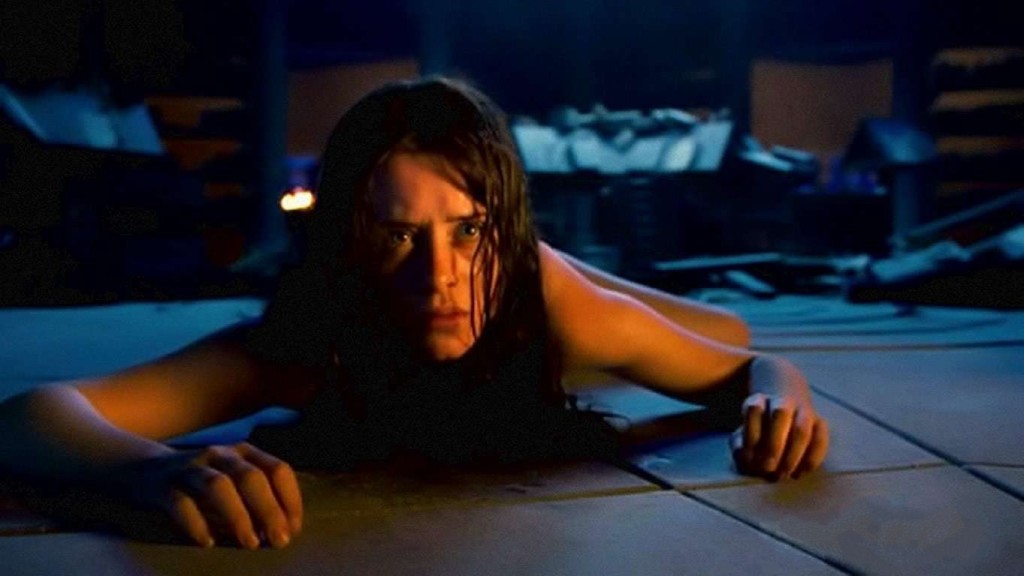
Anna (Claire Foy) expelled from the bowels of the demon, as if born again. If only this theatrical ending was as good as the alternate, Foy’s all-star efforts would not be in vain.
For the sake of argument, let’s assume that the physical presence of the demon in the flesh is better; yes, since this is always subjective, some may just love that full-blown monster effect at the expense of all else. Okay, fine. Why then does the girl need to be brought back as a human, unharmed, as if reborn, naked and innocent, from the bowels of the devil himself? Why, again, must intelligent viewers be made to wonder where the hell she’s been? (I know this is a supernatural movie, but excuse me!) Why not let the demon be one in true form all the while, disguising himself (or herself), with illusions, only appearing to be something as harmless and disarming as a human girl? Why, oh why can’t someone think of such questions, before they are ever asked?
If Anna’s survival (and existence as a real person) had not been so integral to the movie’s ending (one that trumped all else at the expense of making it inconsistent), then the demon could have been a demon and nothing more (not that it isn’t enough), disappearing without a trace in the end, with no reappearing girl. (The truth is that she never needed to have really existed in the first place). Here, “You can’t have your cake and eat it too,” is ever more appropriate. Having the demon and the girl too is, indeed, no more palatable here than it is in the adage. Reuniting the beautiful girl and the hero, as Hollywood often does, is exactly the duality that doesn’t work. No, you can’t have your demon and your girl too, at least not in the way it’s done here.
Now, is there a way that Anna could have existed along with the subpar CGI demon that possessed her and made her physical body disappear? For the sake of argument (if you chose to defend that pitiful route), the answer is yes! Allowing Anna to morph into the demon (as she began to do initially) and effectively be him (or her), by some stretch of fantasy, she could have morphed back into Anna in the end, with the demon’s spirit discharging from her, as he did. No, I don’t like that alternative, because I still prefer Claire Foy (as Anna in the flesh), in all her realistic, demonic glory, doing the deed herself–again as a real person, on screen! Now, enough of that! I only added it because I am true to my word–fair and balanced!
And now for the most important part that gives purpose to everything above. (It actually deserves a drum roll with fanfare and confetti.) On the Bluray, there is, in fact, in the “Extras,” a fully-finished alternate ending. Ironically, after I had already thought out just such an alternate ending in my head (at first as a fantasy), I was surprised (and finally further frustrated) that it wasn’t chosen as the best and used–at least as an alternate that could be played as part of the movie on the Bluray, if preferred. (I mean go ahead and do something constructive with something you’ve already done so well, why don’t you! Bluray technology does allow it!) Yes, such wishes are futile and pointless, I know; but here, I was frustrated by the existence of the very thing I thought would be better–the very thing I had created in my own mind, before I knew it existed. NOW, HERE IS WHERE THERE ARE SPOILERS AHEAD FOR THOSE WHO HAVE ONLY SEEN THE THEATRICAL VERSION. IF YOU HAVE NOT SEEN THE ALTERNATE ENDING, YOU MAY WANT TO STOP HERE AND WATCH IT FIRST.
Yes! On the Bluray, in the alternate ending, the demon remains in the physical form of the girl it has possessed, just as I had wished. All that is added, with great and frightening practical effects, is the hellish, veined complexion, piercing eyes and super strength of a girl possessed by the Devil. Pretty damned scary in its relative simplicity and realism–and much more than a so-so CGI demon, AWOL in our imagination. Yes, yes, yes! Fictional monsters in movies must be really good in order to trick the mind and be truly scary. At best, they are not as effective in our subconscious, because we don’t believe them; they show us nothing we understand. But, that human girl stronger than dozens of men, with arteries bulging on a rabid face, bent on sending your soul to Hell, activates a fear we are born with–one that is part of us, because she is human and so are we; she is a monster scarier than the devil himself, because she confronts us in a form we know, with the powers of something we don’t know. Anna grabs the sword-wielding Knights by the throat, twisting their necks, throwing them easily into walls and on the floor, and, in doing so, we know she is there. She is real, she is not a cartoon, she is not a subpar CGI image, flat and lifeless, distracting us from disbelief. Anna is there, and her presence is felt.
Worse yet is being spoiled by an alternate ending that does exist, in fully-finished glory, highlighting the reasons it is better, all the while being wasted. I watched Anna, driven by the fires of Hell, kicking Crusader ass in a discarded, better finale. I watched the demon exorcised from her body, leaving her unharmed, instead of puking her out, suddenly, from nowhere. I saw the beautiful girl and her young hero leave together, in the end, defeating evil to love another day. Although I felt cheated at first, I was happy to know that, after all, the alternate was chosen anyway, spliced together in my mind. I have scrapped the demon’s denouement, remembering, instead, the better one. So, in a way, I have cheated the devil myself. Yes, that’s a little cocky; but, it works here, doesn’t it? 😀
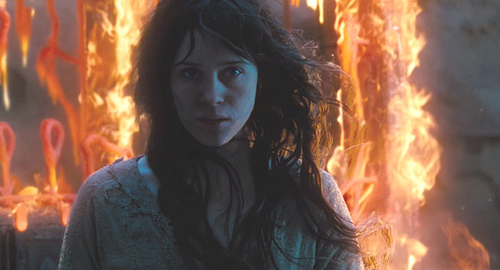
As a metaphor for alternate ending triumph, Anna emerges, like me, unscathed from the fires of theatrical Hell.
Overall, theatrical ending or alternate, Season of the Witch is a cinematic event well worth experiencing, in this age or any. It’s eternal damnation at its finest, with perdition for punishment, and hope for humanity. Offered as redemption is a fast-paced tour de supernatural force, with speed to spare. Gothic goodness oozes from its bubonic buboes, exuding a pestilence of supernatural scares; real-life lessons of good and evil abound, in battles of truth, humanity, and ultimate sacrifice. So, get your Medieval movie swords sheathed, and join the Crusade! Let the Season of the Witch begin!
“A thousand lost souls for the fires of Hell! A glorious day for the Church!” ~ A Crusade general, speaking after the slaughter of men, women, and children
If you saw both endings of the Season of the Witch, and you have an opinion about which one is best, please leave a comment below. Space Jockey Reviews would love to hear what you think!
Visit the official website of actress Claire Foy!
Don’t miss Claire in the Space Jockey Reviews Star Showcase–Coming Soon!
Check out the official Season of the Witch trailer below!
You may also like these!
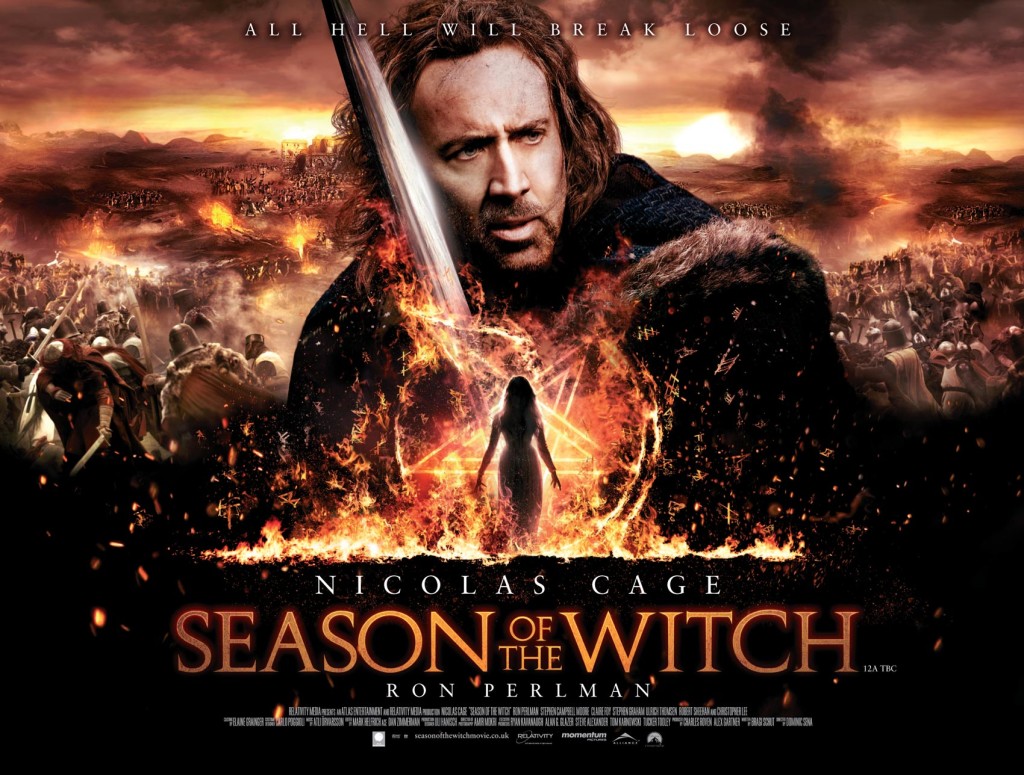
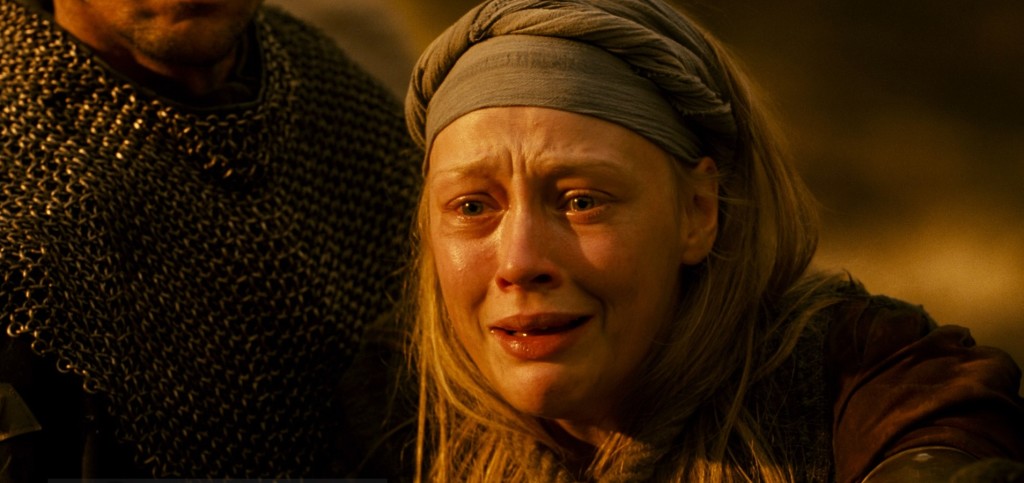
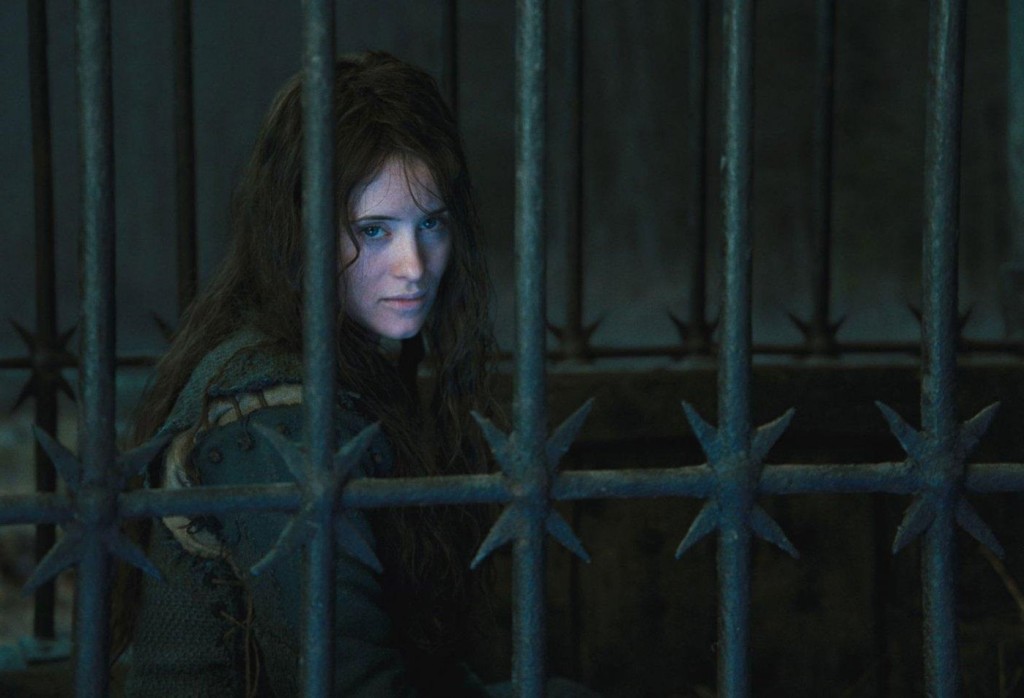
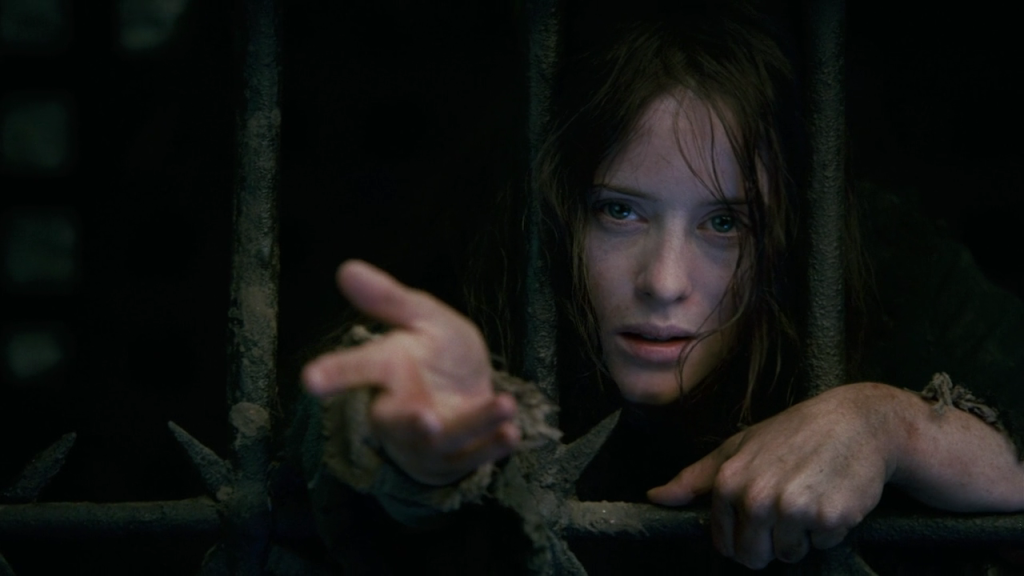

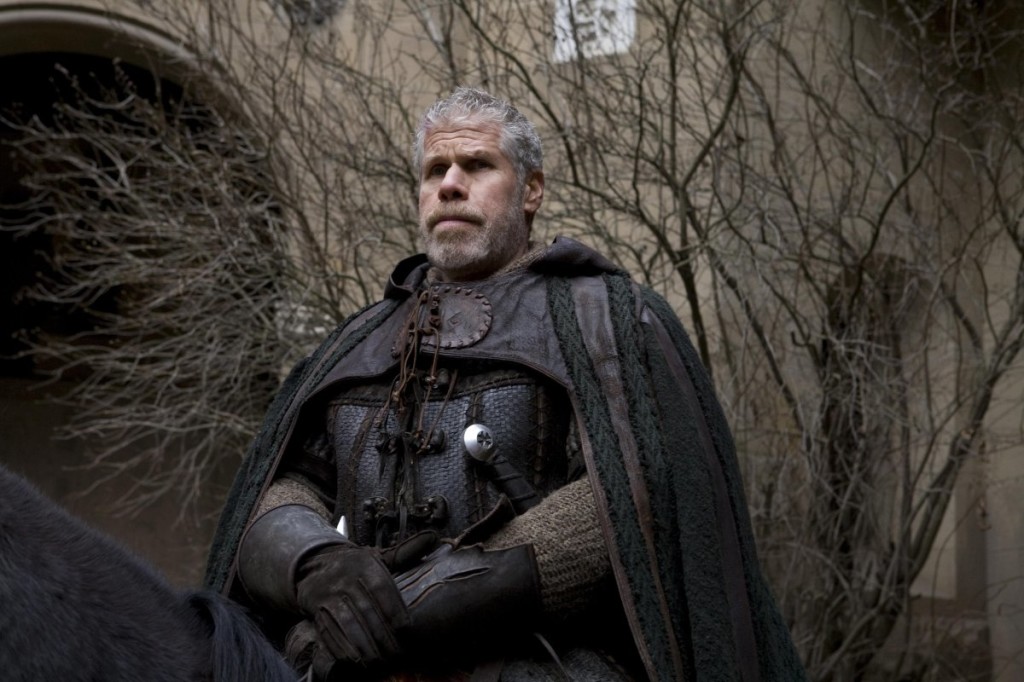
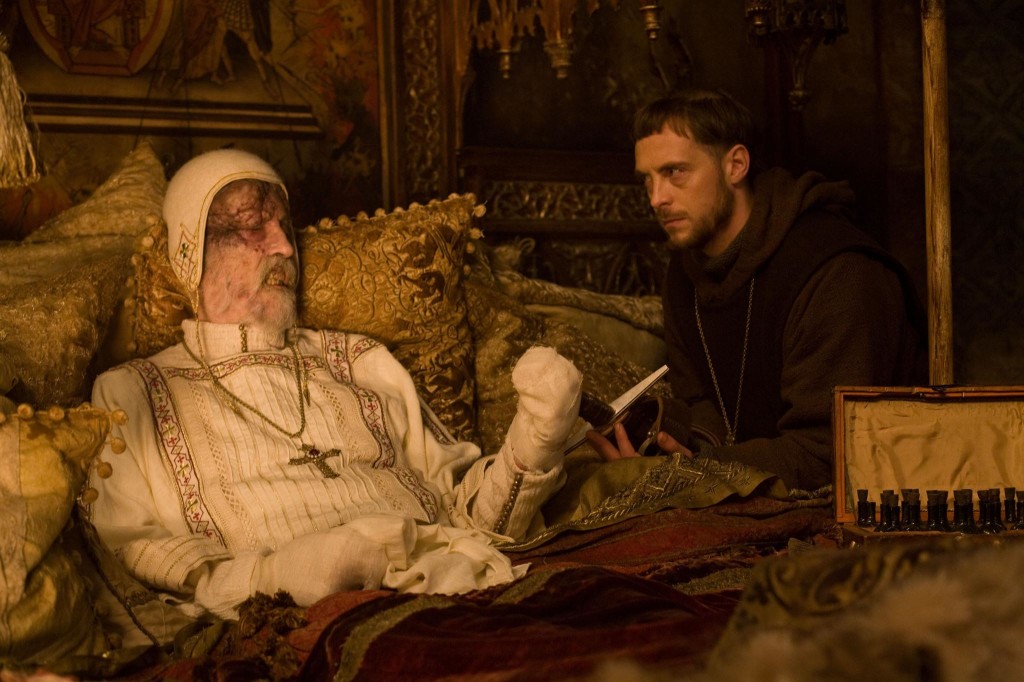
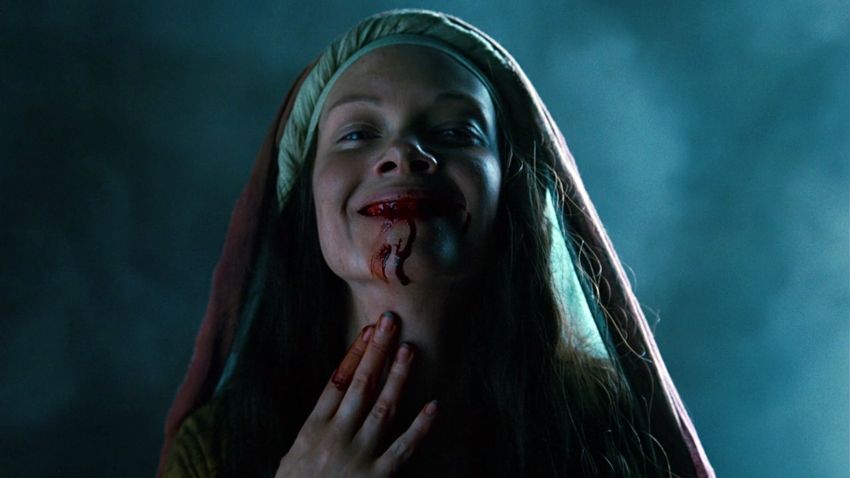



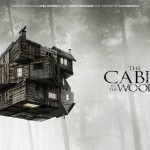






Pingback: Space Jockey Reviews’ Star Showcase: CLAIRE FOY | SPACE JOCKEY REVIEWS